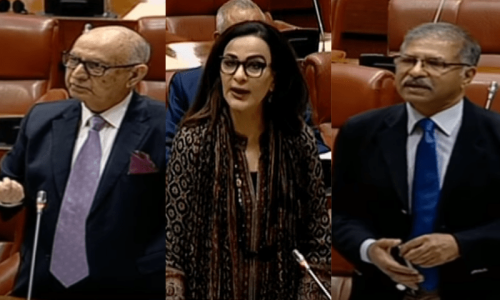SINCE its inception in 1954 in France and wherever it has been initiated, VAT has been debated more extensively than any other tax mode. But for more than 100 countries, VAT is the mainstay of their tax systems because it is said that it raises more revenues with lower costs than any other broad-based consumption tax.
What makes it more fascinating than GST or other sales taxes is that VAT generates higher revenues in a neutral fashion. A comprehensive VAT does not cause individuals or firms to budge their choices, such as goods or locations etc. It does not discriminate capital or the labour intensive firms, specialised or the integrated firms, or corporate or the non-corporate firms.
The present sales tax system in Pakistan can be claimed a VAT with coverage up to manufacturing stage. Another salient facet of the VAT is that it's the first consumption tax to integrate the taxation of services with the taxation of goods. Today, most of the countries have been taxing services comprehensively along with the goods.
In a country like Pakistan, where services account more than 54 per cent of the GDP, taxing services comprehensively would fetch much more revenues required to bridge the growing budget deficits.
VAT is also called the money-machine due to its revenue generation capacity. In OECD countries, it raises revenues up to five to eight per cent of the GDP, while its share is between 15 to 20 per cent of the total tax receipts. In Pakistan where sales tax accounts for more than 60 per cent of the tax receipts, an introduction of VAT will certainly bring a much-needed boost in the tax revenues.
The underlying reasons why Pakistan should adopt it are associated with very basic features of the VAT. 1) Tax coverage manufacturers, wholesalers and retailers, all would be registered. The extension through the retail stage would not only make this sector documented. In contrast to the general perception, the VAT contains the regressive effects of the conventional sales tax system. Even a quasi- progressiveness can be achieved by levying two to three different tax rates. For example, in France the normal VAT rate is 19.6 per cent, but for tourisms, cultural services, transport, restaurants and water etc. , the rate is reduced to 5.5 which is further reduced to 2.1 per cent for the medicine, press etc.
2) Tax base VAT taxes the broadest possible range of the goods and services. It ensures the comprehensive taxing of the services that brings in efficiency as compared to the conventional sales tax system.
First, by not taxing services comprehensively, the tax rate for goods will be higher, which would enlarge the excessive burden of the tax.
Second, since Pakistan is developing economy and in its process of the development, the productivity gains of the industrial sector are likely to be larger and taxing only goods would be equal to taxing these gains in the industrial sector that would further erode the development process.
Furthermore, the income elasticity of demand for most services exceeds unity and thus taxing services will have an overall progressive impact. The efficiency argument of comprehensively taxing services does not rule out the role of exemption on the social grounds. Thus, education, health, social and public services can be exempted. Even, it would be better to introduce zero rates for these services as they could claim reimbursements of the inputs they used.
The voice against the VAT is build around an illusion that it would feed a spiral of tax, prices and wages that would lead to inflationary impacts on the economy, and it will adversely impinge on the poor. For its adverse effects on the poor, since it stretches up to the retailers and comprehensively taxes the services; the VAT is less distortive than the existing general sales tax.
Regarding inflation, VAT by itself, can never lead to a sustained increase in the rate of change of prices (it may change the level of price). Second, there is no evidence from the previous studies that VAT has actually caused any inflation. Third, when we talk about the price hike due to VAT, one need to take into account the existing tax that it will replace.
The prevailing general sales tax can be cascading i.e. the tax is imposed on every stage of supply chain without deduction of the tax paid in early stages. On the other hand, the comprehensive VAT avoids the GST cascading. Fourth, VAT enforces tax neutrality, there would be no changes in the aggregate demand and thus would not have any impact on the aggregate price level.












































Dear visitor, the comments section is undergoing an overhaul and will return soon.